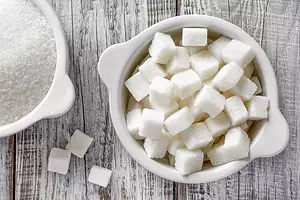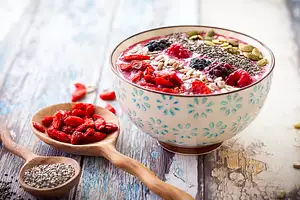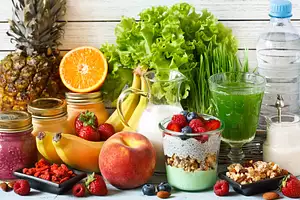Hopefully you are doing what you can to avoid trans fats and steering clear of the foods that are well known to contain them. But, unfortunately, there are plenty of surprising sources that you may not even realize, sources that may only provide small amounts. But if you eat enough trans fats in small amounts, eventually you will be eating a large amount and this will be unhealthy.
A study that was recently published in Preventing Chronic Disease showed that a large amount of foods that were labeled with “0 grams trans fat” actually listed partially hydrogenated oil in their ingredient list. This is one of the main sources of trans fats in any diet.
Because food processing companies are permitted to claim “0 grams trans fat” if the content is less than 0.5 grams of trans fat per serving, you can see how eating large amounts of these foods can certainly add up to an unhealthy amount of trans fat. This is especially true for those who consume large amounts of processed and pre-packaged foods.
Dawn Napoli, a registered dietician and one of the researchers, states, “We eat a lot of packaged foods. Over time that can make a huge difference.”
Here is a list of 7 of the most common culprits that may be sneaking trans fat into your diet.
1. Peanut Butter
One of the ingredients that helps make peanut butter so creamy and give it a long shelf life is partially hydrogenated oil. When you choose the natural versions of peanut butter, you will notice the different consistency—but, you will also avoid this unhealthy ingredient completely, since it is made with only peanuts and salt.
2. Non-Dairy Coffee Creamer
Although the serving size is small, this food packs a punch when it comes to trans fat. If you have a couple of cups of coffee each day, you are going to be taking in a large amount of trans fats—there is about a half a gram of trans fat in each serving, just enough to fly under the radar for labeling purposes, but enough to add up to a terrible amount, just over the course of a few days!
3. Cookies
Many types of packaged cookies contain trans fats in the form of partially hydrogenated oils. Certain brands, like Oreos, have reformulated their recipes to remove this ingredient, but you need to really read the labels to know what you are eating. If you are buying cookies at a bakery, find out whether they use margarine or shortening as an ingredient, and then steer clear.
4. Popcorn
The microwave versions of this classic snack, particularly the butter versions, can add a large amount of trans fat per serving. Butter flavouring may add up to 0.5 grams per serving (and who eats only one serving?), and, beware, because caramel flavouring can add up to a whopping 1.5 grams per serving. Invest in the old fashioned air popper, and enjoy popcorn that is a healthy snack with no added trans fats!
5. Frozen Pizza
The dough of frozen pizza is the main culprit here. You will get about 0.3 grams of trans fat in one regular-sized slice of frozen pizza. Instead of buying the pre-packaged variety, learn how to make your own pizza crust and then add whatever toppings you want, and take out the trans fats! When ordering pizza in a restaurant, find out whether they use margarine or shortening in their dough, so you know whether or not you are getting trans fats.
6. Biscuits
The biscuits that you can find at fast food restaurants are probably actually healthier than the kind you buy in the refrigerated section of the grocery store. Many of the major fast food chains specifically offer biscuits without trans fats, but the kind you buy at the store may contain up to 5 grams of trans fats per biscuit! Add a little margarine and you have a very unhealthy choice on your plate!
7. Margarine
When it first hit the scene after the butter shortages of World War II, margarine quickly became a spread of choice for many. Unfortunately, to create that creamy spread, a large amount of partially hydrogenated oils must be used. Although some versions do claim to have “0 trans fat” on their label, you will find that there is probably partially hydrogenated oil in the ingredient list. Choosing butter is a far healthier choice, but, if you must use margarine, the softer, more liquid versions are slightly better than the firmer types.
Even if you thought you were trying to make healthy choices, you may be getting some trans fats in your diet. The trans fats, even in small amounts, can accumulate and have significant negative health effects. Always make it a habit to read the label, and check for partially hydrogenated vegetable oil to avoid unexpected trans fats.










Comments